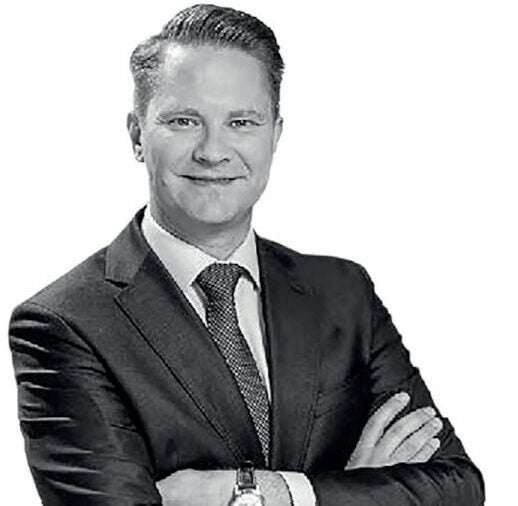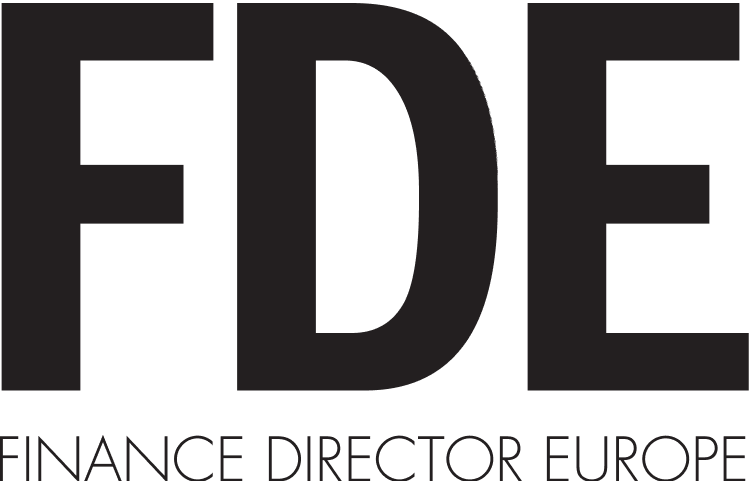
Data-driven insights are a game-changer in the way businesses operate. CFOs are delivering insights that shape strategy and empower their people to make better decisions. Finance Director Europe finds out how data-led insight has become the most valuable corporate currency.
The digital revolution has generated many new benefits for businesses. As organisations become more connected, internally and externally, they are able to tap into wider sources of data for greater depth and nuance, and can store, analyse and aggregate data to power predictive and prescriptive analytics.
Across a range of applications, from real-time supply chain monitoring to sentiment analysis, businesses can now get a view of their customer and operational trends in order to deliver hyper-personalised offerings and slicker user experiences. In short, businesses can now make more data-led decisions with CFOs leading the way.
Any CFOs determined to reach that point will recognise the challenges: siloes between functions need to be broken down and collaboration must improve – with feedback delivered quicker and more accurately to underpin strategic decisions with real rigour. Achieve that, and the benefits – from better customer experiences to more efficient cash management and sustainable growth – will come into view.
Creating synergy
“The big shift during the pandemic has been a greater focus on improving forecasts and prescriptive insights – everything in finance’s transformation journey is working towards that,” says Vivek Saxena, who points to the removal of barriers between functions as a vital element in driving improvements in forecasting and other modelling functions.
“Rather than input coming from business functions and finance trying to interpret it, now finance can get a genuine conversation going where insight is shared between functions,” he says. So, what do these new data-led insights deliver across the business more broadly? “When they become an integral part of operations, finance will be able to provide the business with better insight on demand,” says Saxena. “We see many other functions complain about having to wait until the end of the month for that, but if you can shorten the length of that cycle then business partnering will inevitably improve.”
“Leading finance functions are focused on making data intelligent,” he says, pointing to better collaboration, faster, better decisions, value creation, innovation and growth within the business, as well as an improvement in the quality of forecasts and risk modelling. “And it should also – with the right approach – begin to improve integration and communication with suppliers, vendors and partners,” says Saxena.
“Running data analytics applications empowers finance teams. These teams will change shape and focus – they will understand their business segments better and they will combine knowledge of past events with a keen eye on future trends.”
Saxena’s view is simple: CFOs must understand the past and present to predict the future. This is where machine-based forecasting is coming to the fore. But he emphasises that technology alone can only process data faster, it can’t interpret it. This is why organisations still need their finance experts with an understanding of the business and industry to clarify how the forecasts will impact the business.
Intelligent decisions
Ed Fitzpatrick believes that to harness the transformative power of analytics, first organisations must consolidate, organise and make sense of data and then provide dashboards with insights that people can use to make more informed decisions. And new technology, particularly artificial intelligence and machine learning, are helping CFOs make sense of data in real time.
“One of the biggest benefits is that the volume of data is spreading across the organisation – now as CFO I’m looking at data across the business, not just internal but external data,” he says.
“That might be industry-specific data, customer data, competitor data and so on. And, increasingly, we will use AI to organise the data and highlight potential challenges and opportunities. “Think of accounts receivables,” he continues. “If we can highlight your top five customers that are likely to default based on the data you have access to, such as past performance and invoice discrepancies – pulling all that data together helps highlight where the receivable collection focus should be. Being able to get through such high volumes with speed is a game changer.”
And that’s not the only example of data married to intelligent analysis. “Touchless accounts payable is certainly possible, but it takes two to tango,” Fitzpatrick points out. Vendors also need to be up to speed in terms of automation. “It’s that combination of process and industry expertise coupled with the right technology that is essential.”
Because, as Andy Halford explains, data for its own sake is close to useless. How it is used to improve the business represents the real step forward. “Ultimately, I think that finance functions will increasingly be judged by the quality of the advice that they’re giving to the management team and in a way the traditional processing of data will be done by default,” he says.
“With our KONE 24/7 connected services solution, we are actually getting real-time feedback on the usage of those elevators. And the more data you get, the quicker you learn. I think that’s quite an exciting position to be in.”
Ilkka Hara, Kone
“So CFOs need to use data to deliver a 360º view of the business: about how you make information more forward-looking and less backward-looking, and how to determine if it could add value to what the business does, rather than simply presenting interesting facts.”
Working smart
Widening out the net to include internal and external data is a powerful way to secure competitive advantage. Companies across sectors must consider every piece of insight to help them to understand why customers behave the way they do, and how to deliver products and services to meet those needs. And increasingly that goes beyond simple quantitative data into unstructured, qualitative data gathered through, for example, social media and other sources.
This data provides the opportunity to see gaps in services, consumer needs and experiences and plug those with partnerships that benefit both parties.
As a CFO working in financial services, Andy Halford is well aware that the competition from the new digital challengers presents a great opportunity to drive growth, develop new income streams and provide the services and experience customers want and businesses can learn from.
Halford’s experience using technology to drive better strategy is especially compelling. Standard Charted has, in recent years, used a data-led approach to secure partnerships with competing players in the sector – many of which lack the necessary capability to meet rigorous regulatory requirements.
“Some of those businesses that have direct customer contact don’t want to actually get into the details of all that complex banking delivery,” Halford says, explaining that Standard Chartered have worked with retailers to integrate a wider set of financial services into their offering.
“If we can help them make the purchasing process simpler, through the use of a simple bolt-on which offers customers the chance to access credit facilities for other products, we can actually make that process seamless, and leave it with the other party to actually deliver.” That type of intelligent partnering, Halford believes, represents a benefit for all parties.
But of course, it relies on technology that can flex and scale as the business opens up new markets. In other words, innovation must sit at the heart of that process, as evidenced by one of Standard Chartered’s flagship projects currently running in Indonesia, where the bank has partnered with an online retailer to seamlessly offer credit products via the retailer’s website – offering the customer the chance to buy more with fewer clicks. The aim is to combine Standard Chartered’s credit checking abilities with the retailer’s well-developed customer service offering, and the collaborative project then allows for increased credit availability among various consumer groups.

Halford adds, “The front end is seamless – why would a bank choose to not go down that route? It will still do the same credit vetting but with the right partner, it may source more interesting retail customers and therefore there could be a win-win in that situation.”
Predict and pre-empt
Halford is one of many CFOs who now prioritises the use of analytics to develop an understanding of public perceptions, a vital factor for a business in a ruthlessly competitive sector.
“We monitor, as I’m sure many businesses do, feedback from customers which we take from samples on a regular basis,” he says. “We look at their propensity to recommend our brand, for instance, while we also track the positive or negative bias of the media articles.”
The bank also conducts extensive polling on the recognition of its brand in different places and communities, and through its Liverpool FC sponsorship, it does a lot of work to understand whether that is extending the company’s reach.
“So we’ve got a number of tentacles out that are constantly feeding information back,” Halford says of the efforts to understand customer desires and adapt its offerings accordingly.
Ilkka Hara, says that technology now makes it much easier for CFOs to track, not only customer sentiment – but also to deliver a hyper-personalised customer experience. “We’ve been in a very good position to start using technology to provide something which is extremely valuable to our customers,” he explains.
Under Hara’s guidance, Kone has invested in technology that allows the business to tailor maintenance packages to meet individual customer needs. “So every individual contract that we sign today is unique, but then with that, we also get feedback every day,” notes Hara. “With a broader set of data coming in from the field we can better understand exactly the maintenance service that customers want to buy.”
Hara believes Kone is better equipped to gain foresight about what exactly the customer actually needs from the products or services, and where Kone can provide value and solve the issues around that directly. Hara’s work at Kone is an example of how the use of AI-led analytics can really make a difference in how the business operates, as well as what it can offer for its various business partners.
With over 1.4 million elevators in its maintenance base across its many customers, the CFO says he needs to analyse high volumes of data to better understand how to offer service solutions to a fragmented and varied customer base.
“So, for example, robotic process automation is one which can be a solution to easily automate the data collection and analysis process around a diverse set of customers and their requirements.
“With our KONE 24/7 connected services solution, we are actually getting real-time feedback on the usage of those elevators. And the more data you get, the quicker you learn. I think that’s quite an exciting position to be in at this point,” he says.
This new method of accessing data analytics allows companies to respond and adapt immediately, allowing for greater – and faster – innovation than was previously possible. It is the CFOs willing to embrace this reality who find themselves most equipped to benefit.

“Running platforms like Genpact will empower finance teams of the future. And those teams will change shape and focus – they will understand their business segments better and they will combine knowledge of past events with a keen eye on future trends.”
Vivek Saxena, F&A service line leader, Genpact
Ultimately, Hara and his fellow CFOs are now in a far better position to deliver sharper insights and more accurate forecasting, and create a more agile, intelligent enterprise.






